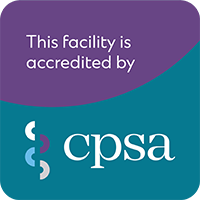Well, that was fun. I was honored and privileged to speak at the quadrennial IFOMPT physiotherapy conference in Basel, Switzerland. I love catching up with professional colleagues from across the globe, especially ones that tolerate my nerdiness for science. To be surrounded by others passionate about musculoskeletal pain and research is fantastic.
So, what’s new you may be asking.
It was really exciting to hear of research surrounding whiplash associated disorders, and the studies using advanced imaging techniques, which are starting to demonstrate the presence of nerve dysfunction, at the nerve root level, but also at the dorsal root ganglion in the neck. Although many patients in the current grading system of whiplash-associated disorders are labelled WAD 2, which by definition excludes neurological deficit, the fact that many have documented nerve pathology indicates that some patients are being misclassified. And thus, their management may be lacking.
Elsewhere, there was a general recognition that patient focused care is vital to provide best outcomes. Likely not a surprise there. Some interesting discussion abounded around the role of physiotherapists within this framework. Are they best utilized within a healthcare team framework, or should they receive extra training to deliver cognitive behavioural therapy interventions? Outcomes currently appear to be superior in programs delivered by physiotherapists who have received training to deliver CBT – and also more cost effective. But then, studies have so far focused on low back pain. This space will be interesting to watch.
The scary part of the conference related to the rapid utility of artificial intelligence as it reshapes the healthcare landscape. There is actually a fully integrated AI physiotherapy clinic in the UK for low back pain. Of fascination, is that the majority of people surveyed after receiving care reported that the experience was superior to that previously received with physiotherapy. I’m not sure what experience they had previously – that doesn’t sound good!
And what did I speak on – well, a little boring topic for most people – that being Central Sensitization. I was surrounded by a panel of superstars, postulating on reasons why people present with chronic pain. Lifestyle and behavioural factors were covered in detail.
So what is Central Sensitization?
Central sensitization is a mechanism underpinning non recovery of people with chronic pain. First outlined in 1983 when Clifford Woolf was performing experiments on rats who sustained a burn injury1, an increased excitability of central nervous system (CNS) neurons has been postulated as a reason why acute pain becomes chronic and then maintained in some people2. The term human assumed central sensitization (HACS) has been termed to describe the clinical features observed in humans3.
The tricky part is determining how this can be identified, given that there is no ability to test the ‘reactivity’ of the CNS nociceptors (receptors that sense danger). Thus, currently central sensitization is inferred from tests involving a noxious stimulus to evoke a person’s pain response. This may involve application of pressure, heat or electrical stimuli. If a person has a lower threshold to this stimulus becoming painful, then it is thought that HACS may be contributing to the person’s symptoms.
Can this be modulated/treated/improved?
As Oasis put it in their rousing anthem – You know what Some Might Say: So what? It is only helpful if we have a treatment. This is the million dollar question? What evidence is there to suggest that treatments improve human assumed central sensitization? There are three possible regions in the body’s central nervous system whereby interventions may assist:
- At the source of the tissue damage to influence ‘bottom-up’ mechanisms influencing HACS. There is significant evidence that removing the underlying source of pain, such as total hip arthroplasties for osteoarthritis is beneficial4. Our work has also demonstrated that radiofrequency ablation of the sensory nerves carrying messages from the little bones in the neck that were injured in a motor vehicle collision reduces features of HACS5. And then, when the effects wear off, the clinical features return6.
- Using medications to influence spinal cord and brain mechanisms influencing HACS – different medications have been demonstrated to reduce HACS in conditions such as cystitis7 and diabetic neuropathy8 – but not in musculoskeletal pain. We also know that people with fibromyalgia are more likely to benefit from medications that address the central nervous system, as compared to over the counter pain and anti-inflammatory medications9
- Using behavioral techniques to influence top-down modulation of pain at the brain level. Some recent research has demonstrated that Pain Reprocessing Therapy reduces pain and is also associated with improvements in brain functioning10. Virtual reality when combined with pain neuroscience education is also beneficial11.
So where does physiotherapy fit in this picture?
Well, one systematic review has demonstrated that different physiotherapy techniques can assist with features suggestive of HACS. So, for those whereby the accelerator pedal (facilitated temporal summation) is dominating clinical features, isometric exercise and manual therapy might be helpful (albeit with very weak effects, which may not be clinically meaningful). For those whereby the braking mechanism is faulty (impaired Conditioned Pain Modulation), then transcranial Direct Current Stimulation or repetitive transcranial Magnetic Stimulation can be helpful. Again, the effects are ‘weak’ and require further research.
So, where does that leave us – as with anything involving chronic pain – addressing all the features associated with a person’s clinical picture seems to have the best results. The biggest effects have been observed with treatments directed at the source of a person’s tissue damage and resolving such. If that is not possible, then interventions aimed at settling down sensitivity of the nervous system are warranted to allow rehabilitation to be performed to resume rewarding life activities.
References:
- Woolf CJ. Evidence for a central component of post-injury pain hypersensitivity. Nature 1983;306(5944):686-8.
- Woolf CJ. Central sensitization: implications for the diagnosis and treatment of pain. Pain 2011;152(3 Suppl):S2-15.
- Schuttert I, Timmerman H, Petersen KK, et al. The Definition, Assessment, and Prevalence of (Human Assumed) Central Sensitisation in Patients with Chronic Low Back Pain: A Systematic Review. J Clin Med 2021;10(24). DOI: 10.3390/jcm10245931.
- Kosek E, Ordeberg G. Lack of pressure pain modulation by heterotopic noxious conditioning stimulation in patients with painful osteoarthritis before, but not following, surgical pain relief. Pain 2000;88(1):69-78.
- Smith AD, Jull G, Schneider G, Frizzell B, Hooper RA, Sterling M. Cervical Radiofrequency Neurotomy Reduces Central Hyperexcitability and Improves Neck Movement in Individuals with Chronic Whiplash. Pain Med 2014;15(1):128-141. (In Eng). DOI: doi: 10.1111/pme.12262.
- Smith AD, Jull G, Schneider GM, Frizzell B, Hooper RA, Sterling M. Modulation of Cervical Facet Joint Nociception and Pain Attenuates Physical and Psychological Features of Chronic Whiplash: A Prospective Study. PM R 2015;7(9):913-21. DOI: 10.1016/j.pmrj.2015.03.014.
- Olesen SS, Graversen C, Bouwense SA, van Goor H, Wilder-Smith OH, Drewes AM. Quantitative sensory testing predicts pregabalin efficacy in painful chronic pancreatitis. PLoS One 2013;8(3):e57963. DOI: 10.1371/journal.pone.0057963.
- Yarnitsky D, Granot M, Nahman-Averbuch H, Khamaisi M, Granovsky Y. Conditioned pain modulation predicts duloxetine efficacy in painful diabetic neuropathy. Pain 2012;153(6):1193-8. DOI: 10.1016/j.pain.2012.02.021.
- Hauser W, Thieme K, Turk DC. Guidelines on the management of fibromyalgia syndrome – a systematic review. Eur J Pain 2010;14(1):5-10. DOI: 10.1016/j.ejpain.2009.01.006.
- Ashar YK, Gordon A, Schubiner H, et al. Effect of Pain Reprocessing Therapy vs Placebo and Usual Care for Patients With Chronic Back Pain: A Randomized Clinical Trial. JAMA Psychiatry 2022;79(1):13-23. DOI: 10.1001/jamapsychiatry.2021.2669.
- Ceko M, Baeuerle T, Webster L, Wager TD, Lumley MA. The effects of virtual reality neuroscience-based therapy on clinical and neuroimaging outcomes in patients with chronic back pain: a randomized clinical trial. Pain 2024. DOI: 10.1097/j.pain.0000000000003198.





